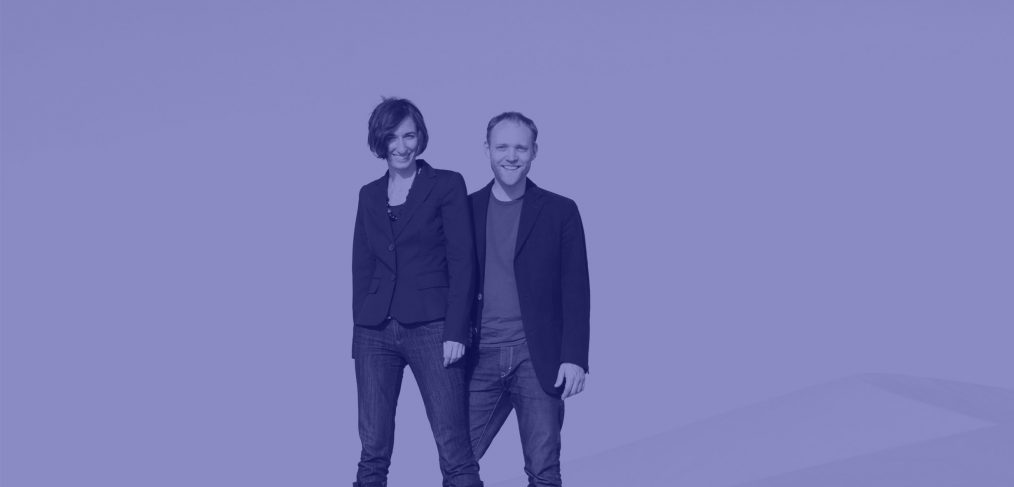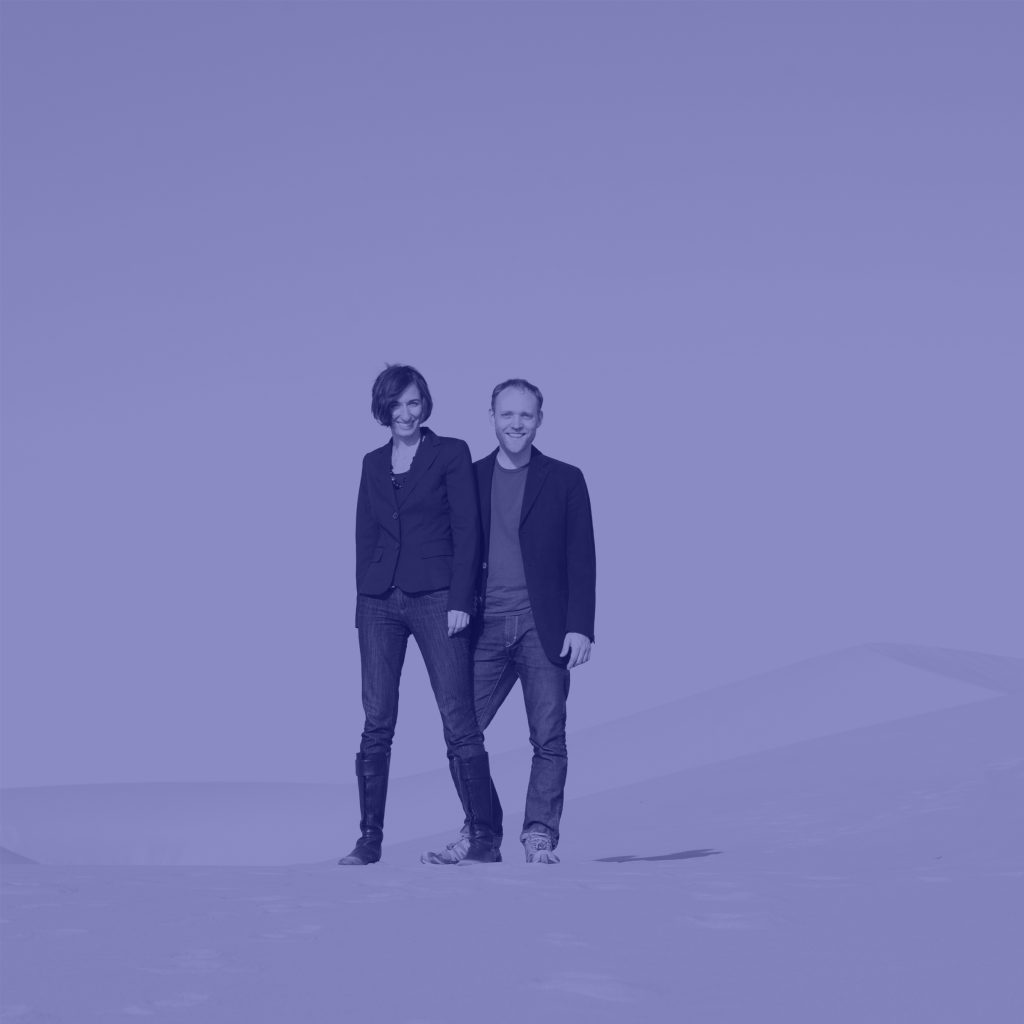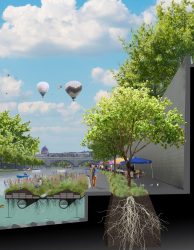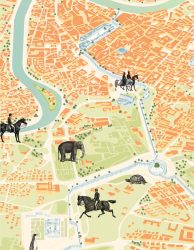
Interview with Elizabeth Monoian & Robert Ferry
1) Briefly introduce yourself and tell us a bit more about your practice. What do you work on? What are the issues you aim to address in your profession?
Robert is an architect and LEED AP who has collaborated over decades on projects large and small as both a consultant and a client representative. Elizabeth Monoian holds an MFA from Carnegie Mellon University. Together, we’re the founding co-directors of the Land Art Generator Initiative (LAGI).
The Land Art Generator provides a platform to bring forward solutions for sustainable energy infrastructures that reflect culture and enhance the city as works of public art. Through open design competitions for Dubai, Abu Dhabi, New York City, Copenhagen, Santa Monica, Melbourne, and Nevada, the Land Art Generator has inspired thousands of innovative proposals from around the world. Participatory design projects include Land Art Generator Solar Mural artworks, co-designing culturally relevant clean energy solutions with Maasai women in Olorgesailie Kenya, working with West Virginia coal miners on destination energy landscapes, and more. By nature of their functional utility, LAGI civic artworks cross disciplines from architecture and urban design to mechanical engineering and environmental science. This interdisciplinary result has the effect of both enhancing the level of innovation and broadening the audience for the work.
Our publications include The Time is Now: Public Art of the Sustainable City (Page One), Regenerative Infrastructures (Prestel), New Energies (Prestel), Powering Places (Prestel), Energy Overlays (Hirmer), Return to the Source (Prestel), Land Art of the 21st Century (Hirmer) and A Field Guide to Renewable Energy Technologies.
2) What kind of role can we play as designers and researchers in reimagining urban life? How can we produce new inspiring solutions able to propose alternative models of living, with focus on biodiversity in urban areas?
Designers have a uniquely important role to play in the transition of human civilization from a culture of linear consumption and exploitation to a culture of stewardship and regeneration. Listening to and learning from nature will be key, as we begin to weave old and new technologies and create planet positive feedback loops and incentives. Just as important will be listening to and learning from local communities, empowering citizens to co-design public places, and providing educational opportunities. Designers and researchers have a responsibility to not just seek out problems, but to world-build elegant solutions that expand the boundary of system inputs and outflows to create closed loops with zero waste and limited external energy and resource requirements. Human habitation will best support biodiversity when we limit our settlements, industry, and our agricultural land use to clearly defined boundaries, conserving wild interconnected corridors of nature between them.
3) WWF has often referred to Rome as the European Capital of Biodiversity also thanks to the fact that the city evolved around classical principles of balance between nature and civilization. How can this balance be rediscovered in the context of today? When empowering biodiversity, how can we turn a city famous for its past, into a model for tomorrow?
We are focused on the transformation of every city into a solar capital, where there is at least one photovoltaic module for every resident installed within the city limits. The more of our clean energy infrastructure that we can bring into population centers, the more we can preserve rural landscapes, viewsheds, and natural habitats that might otherwise be developed into centralized solar farms. Within every city there are countless opportunities for distributed energy resources that can provide social co-benefits such as solar shade structures that alleviate heat island effects, aquavoltaics on reservoirs to reduce evaporative loss, agrivoltaics for urban farming and water harvesting, and creative financing models that provide new opportunities for wealth building in historically marginalized neighborhoods through locally-owned cooperatives that provide energy services. As new energy infrastructures become woven into the fabric of our cities it will be critically important that their design be centered on equity and inclusion, and that the physical manifestation of these energy systems reflects local culture and complement historical identity. That requires designers who can use solar and other renewable energy technologies in creative ways.
4) Are there any reference projects you could suggest to inspire our community for this design challenge? Why did you choose this specific example?
In terms of expanding biodiversity in the city, one project that comes to mind is related to our most recent partnership with the Federal Bundesqartenschau (BUGA 23) in Mannheim, Germany. The horticultural festival taking place in 2023 at the decommissioned Spinelli military base will present an innovative experimental field for living together in the city sustainably, exploring solutions to climate, the environment, sustainable agricultural production, and food security. On exhibit will be the shortlisted outcomes of LAGI 2022 Mannheim, our upcoming design competition, which will expand what is possible using existing clean energy technologies to create beautiful, sculptural modules that can plug into the smart postcarbon city. Resisting the temptation to densely develop the old barracks lands after the conclusion of BUGA 23, more than sixty hectares will instead be given back to nature, forming the Spinelli climate park, a green corridor available to all citizens as a new park stretching from Luisenpark on the south bank of the Neckar River to the Vogelstang Lakes.
Another inspiring example is the Enghaveparken in Copenhagen, which has been redesigned as a public square that doubles as stormwater collection infrastructure, capable of managing six million gallons of water during extreme rainfall events and saving the surrounding city from uncontrolled flooding.
5) In your experience, what does it take to win an architecture competition? What about this competition in particular?
It takes the perfect mix of pragmatism, bold creative experimentation, and authenticity of place. If possible, illustrate the steps of your ideation process. The best design responses present a simple yet captivating expression that reveals the elegance of technologies, honors the nature of materials, works at both a human scale and from a distance, instills a sense of wonder and possibility, and offers an array of interpretations and meaning. Easy!





